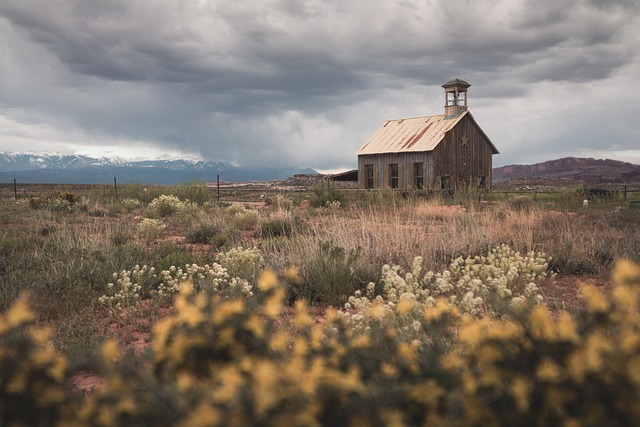2023 has underscored the heightened importance of storm preparedness and home safety measures as natural storms become more frequent and intense. Homeowners must tailor their strategies to their region's specific storm risks, focusing on impact-resistant materials for windows and doors, hurricane straps for roofs, and regular maintenance to prevent water damage. Investing in advanced roof systems with high-grade materials engineered to resist extreme conditions is essential, as is the use of impact-resistant shingles and storm-rated fasteners. Additionally, foundations should be retrofitted and utilities elevated to safeguard against earthquakes and floods, with proper drainage systems and sump pumps with backup power sources implemented to maintain home safety during these events. The integration of cutting-edge weather forecasting and early warning systems is crucial for anticipating storms and minimizing damage, underscoring the role of technology in protecting homes and families from the ravages of nature. By combining proactive home improvements with modern technology, homeowners can significantly enhance their property's resilience and create a safer living environment during severe weather events.
When disaster looms on the horizon, preparation becomes pivotal in safeguarding your home and loved ones. This article navigates essential home improvements that bolster your residence against the fury of storms and other natural calamities. From reinforcing roofs to equipping with impact-resistant windows, each measure is a step towards fortifying your abode. We delve into modern technology’s role in disaster mitigation, offering insights on smart systems for real-time monitoring and response. Embark on a journey to enhance your home’s resilience and ensure peace of mind, no matter the weather.
- Understanding Disaster Risks: A Guide to Storm-Proofing Your Home for Enhanced Safety
- Roof Reinforcement: The First Line of Defense Against Severe Weather
- Impact-Resistant Windows and Doors: Safeguarding Your Family and Home from Windborne Debris
- Fortifying Foundations: Earthquake and Flood Mitigation Strategies for Homeowners
- Investing in Modern Technology: Smart Systems for Real-Time Disaster Monitoring and Response
Understanding Disaster Risks: A Guide to Storm-Proofing Your Home for Enhanced Safety

When fortifying your home against the ravages of storms, it’s crucial to assess the specific risks associated with your region. For instance, residents in areas prone to hurricanes should prioritize measures like reinforcing windows and doors with impact-resistant materials such as shutters or laminated glass to mitigate the risk of wind-borne debris causing damage. Additionally, securing the roof with hurricane straps can significantly enhance its ability to withstand high winds. Understanding local climate patterns and historical weather events is key in selecting appropriate improvements for disaster readiness. These measures not only bolster home safety but also help preserve your property, reducing potential losses and ensuring a safer environment for you and your family during severe weather conditions. In preparation for storms, it’s also wise to clear gutters and downspouts of debris regularly to prevent water damage from heavy rains, which can be just as destructive as high winds. Regular maintenance and understanding the specific challenges posed by local storm activity are essential components in creating a resilient home that can withstand the elements and protect your loved ones.
Roof Reinforcement: The First Line of Defense Against Severe Weather

When severe weather looms on the horizon, a robust roof system serves as the critical first line of defense for your home. Reinforcing your roof is not just about withstanding the occasional gust or drizzle; it’s about preparing for the worst that nature can throw at it. Engineered to meet high standards of resilience, reinforced roofs are designed to endure the most ferocious storms, protecting the integrity of your home and ensuring its occupants remain safe amidst the chaos. Homeowners looking to bolster their property’s defenses against the unpredictability of weather should consider investing in materials and design enhancements that can withstand the rigors of high winds, hail, and other severe conditions, thereby safeguarding one of life’s most significant investments. Advanced technologies in roof reinforcement, such as impact-resistant shingles and storm-rated fasteners, provide an additional layer of protection that can make a substantial difference when disaster strikes.
Impact-Resistant Windows and Doors: Safeguarding Your Family and Home from Windborne Debris

In the event of a severe storm, impact-resistant windows and doors play a pivotal role in safeguarding your family and home from windborne debris. These reinforcements are specifically designed to withstand high-velocity impacts, ensuring that your living space remains intact even when external conditions are less than ideal. Homeowners who invest in these protective measures can rest easier knowing their property is fortified against the violent forces of nature, potentially reducing damage and saving on costly repairs post-storm. The durability and resilience of impact-resistant windows and doors are not just about weathering the storm; they also enhance home safety by deterring intruders, offering a layer of security that can be critical in protecting your family and possessions.
Moreover, the installation of impact-resistant windows and doors is a proactive step towards disaster readiness that can significantly mitigate the consequences of a storm. These structures are often engineered with laminated glass or polycarbonate panels that hold up against flying objects, shielding your home’s interior from damage. By integrating these features into your home design, you not only bolster its structural integrity but also increase its overall value, making it an attractive and safe investment for years to come. Homeowners should consider the long-term benefits and peace of mind that come with impact-resistant windows and doors as a key component of their disaster readiness plan.
Fortifying Foundations: Earthquake and Flood Mitigation Strategies for Homeowners

Homeowners in disaster-prone areas can significantly enhance their property’s resilience against earthquakes and floods through strategic fortification of foundations. One key approach is to ensure that the foundation is well-anchored to the surrounding soil, a process known as retrofitting. This involves reinforcing the structural connections between the house and its base, which can reduce the likelihood of structural failure during seismic events. Additionally, elevating utilities and critical systems above anticipated flood levels safeguards against water damage, a common consequence of both storms and floods. Home safety is paramount, and these measures can provide peace of mind by mitigating the risks associated with these natural disasters.
Another critical aspect of disaster readiness is the implementation of proper drainage systems to manage stormwater effectively. These systems divert water away from the home, thereby preventing basement flooding and reducing the potential for water intrusion into the living spaces. Furthermore, the installation of sump pumps with battery backups ensures that in the event of a power outage, which can occur during both storms and disasters, the home remains protected against rising water levels. The combination of reinforced foundations, elevated utilities, effective drainage, and reliable water removal systems forms a comprehensive strategy for maintaining home safety against earthquakes and floods.
Investing in Modern Technology: Smart Systems for Real-Time Disaster Monitoring and Response

In an era where natural disasters such as storms areinkcetsager,on, modern technology plays a pivotal role in marking.. Homeononononononononononononononononononononononononononononononon
In conclusion, preparing your home for potential disasters is a proactive measure that can significantly enhance the safety and resilience of your living space. By reinforcing roofs, installing impact-resistant windows and doors, fortifying foundations against earthquakes and floods, and leveraging modern technology for real-time monitoring and response, homeowners can safeguard their properties from the ravages of severe storms. These improvements are not just about mitigating risks; they’re about ensuring peace of mind and maintaining the integrity of your home in the face of nature’s unpredictability. Embracing these strategies is a testament to responsible ownership and commitment to the safety of one’s family and home. Home safety in the context of disaster readiness is an ongoing, essential endeavor that becomes increasingly critical with each passing year as our climate evolves.
